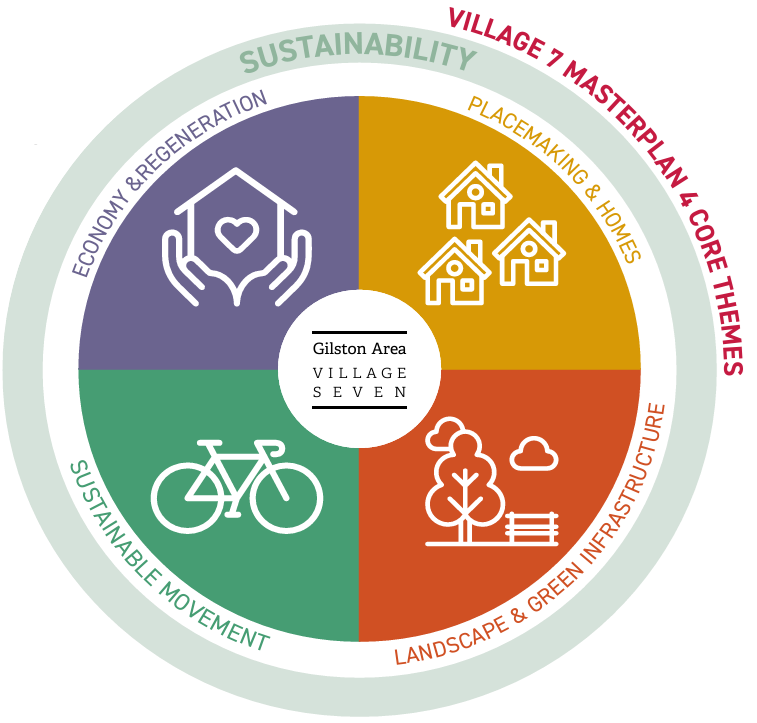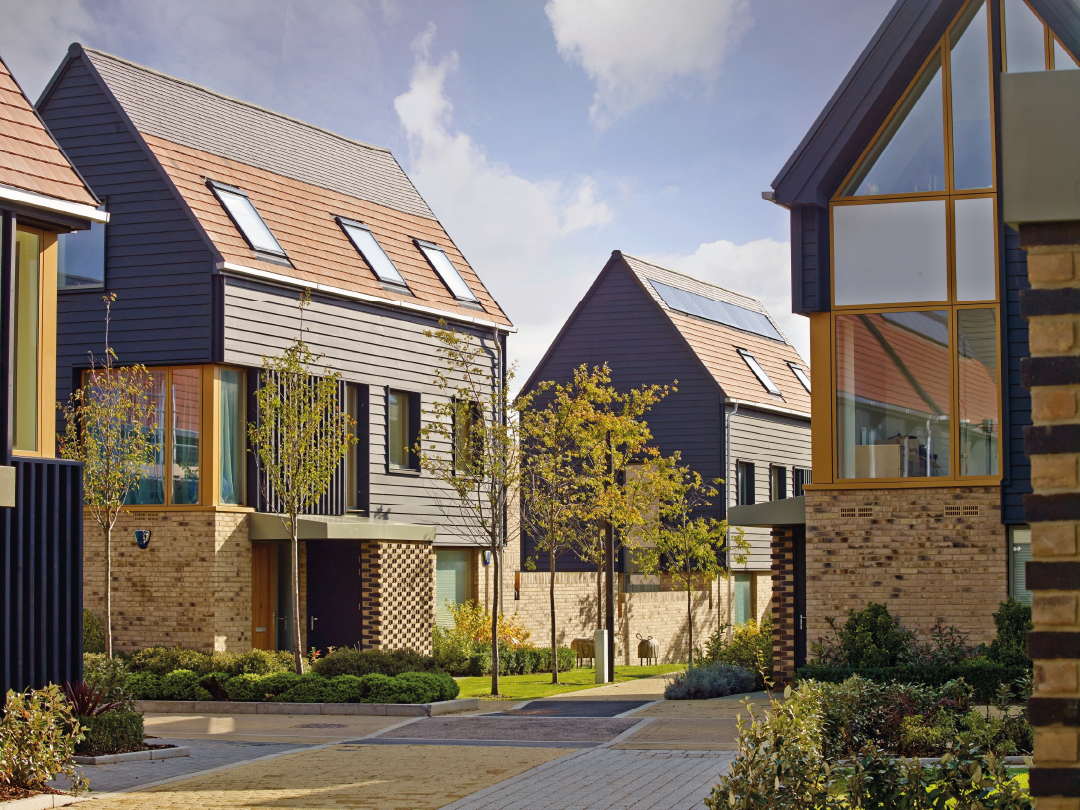“Our vision is to create an environmentally responsible, sustainable, innovative and distinctive new community where people want to live”
Taylor Wimpey’s vision for Village 7 and the wider Gilston Park Estate is derived from the unique character of the place and its setting.
Our design approach is landscape and heritage-led, based around key Garden City principles. This approach is reinforced and supported by various local and national policies and guidelines, including the Harlow and Gilston Garden Town Design Guide, which places considerable emphasis on sustainability around four key themes.
Gilston Village 7 will be sustainable, high-quality, and distinctive while being grounded to the local area, complimenting the existing landscape and heritage assets.


Transport and Connectivity
To support our aim for a highly sustainable Village 7, sustainable modes of transport will be at the heart of its design. Our aim is to achieve a target of 60% mode share by sustainable transport modes to create an environmentally-friendly, sustainable and healthy place to live.
Walking and cycling will be encouraged for both leisure and commuting, with the aim to reduce the everyday use of cars.
To support our aim for a highly sustainable Village 7, sustainable modes of transport will be at the heart of its design. Our aim is to achieve a target of 60% mode share by sustainable transport modes to create an environmentally-friendly, sustainable and healthy place to live.
Walking and cycling will be encouraged for both leisure and commuting, with the aim to reduce the everyday use of cars.

Village 7 will:

Be well-served by public transport, with a Sustainable Transport Corridor running through its core

Create new and improved Public Rights of Way to better connect the wider Gilston Area, Harlow, Roydon Station and Eastwick.

Transform Church Lane into a key active travel spine as a core north- south movement route.

Establish a clear street hierarchy with a well-defined movement network for all modes of transport.
What is the Sustainable Transport Corridor?
The Sustainable Transport Corridor (STC) will be a key movement corridor for Village 7, creating ease of movement between the wider Gilston Area and Harlow Garden Town.
The STC will do this by accommodating high-frequency, prioritised bus services to the Gilston Area. This will create a strong link between these villages and Harlow Town Station, reducing the need for a car to travel for work, school or leisure.
The Village Centre will feature an STC Hub, offering various modes of transport conveniently in one place, including cycle and e-scooter hire, car clubs, and public transport. This will maximise accessibility to workplaces and retail facilities in the centre.


A landscape-led approach
Village 7 will respect and compliment the existing features of the site and its local area, maximising views and protecting important heritage assets, including Hunsdon House, the Grade II Listed Brickhouse Farm Barns and Lord’s Wood ancient woodland.
The village will be connected by Green Wedges and Habitat Corridors which will be integrated with the walking and cycling network, connecting residents and visitors with nature as they move around the community.
Green spaces will be within easy reach around Village 7, with new multi-functional open spaces, play areas, sports grounds, trails, natural green spaces, and a Sustainable Drainage System (SuDS).
Village 7 will feature a series of smaller green spaces within the built area, functioning as a village green with spaces for activities, events and sports.
Sustainability
To address the demands of climate change, Village 7 will be an adaptable, healthy and innovative development built around net zero principles. It will deliver significant biodiversity improvements as part of a well-connected community.
The first phase of homes delivered at Village 7 will meet the government’s Future Homes Standard and produce 75-80% less carbon emissions than those built on current building regulations, and by 2030 all homes will be zero-carbon ready as the energy network transitions to renewable sources.
Village 7 will also feature a Community Heat Hub, which will deliver a low-carbon heat solution for the new community. This will contribute significantly to the sustainability of the village.
While the village will encourage active and sustainable travel by design, each home will be fitted with electric vehicle charging points.

Community and Identity
Village 7 will have a distinct character and its own village centre, but it will share a collective identity with the other 6 villages in the Gilston Area.
The village will have a new primary school set in the village centre, surrounded by homes which will be of high quality and varied design. The homes will respond sensitively to the existing features of the site and establish a positive relationship with the surrounding countryside by design.
There will be three distinct character areas in the village, ranging from less formal in the Eastern Area, to more formal in the Western Area, and a formal Village Centre.



